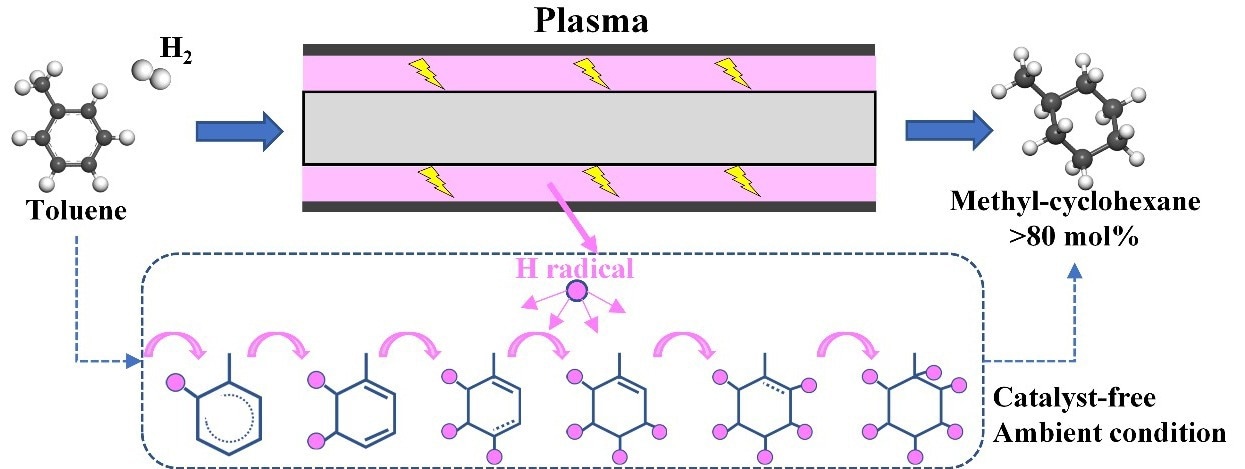The global trend for heavier crude oil is grave. Making use of heavy oil to its full potential in a clean and effective manner is an uphill battle.
 Cycloalkanes prepared by pulsed dielectric barrier discharge plasma. Image Credit: IEEE
Cycloalkanes prepared by pulsed dielectric barrier discharge plasma. Image Credit: IEEE
A possible solution to this issue is plasma technology, which avoids the need for catalysts, high temperatures, and high pressures throughout the process. Additionally, it benefits from a quick process flow, reduced carbon emissions, and a wide range of material adaptability. However, since heavy oil is inert, this method is challenging.
With the help of various types of pulsed discharge plasma, researchers under the direction of Prof. Tao Shao from the Institute of Electrical Engineering (IEE) of the Chinese Academy of Sciences (CAS) examined the conversion laws and reaction mechanisms of plasma-enabled heavy oil conversion and converted heavy oil into acetylene, carbon materials, or cycloalkanes.
The researchers looked at the features of heavy oil cracking in terms of pulse voltage, pulse repetition frequency, and discharge power using microsecond pulsed spark discharge plasma. The pulsed spark plasma’s quick heating and cooling process was discovered using emission spectral analysis.
With a heavy oil conversion rate of 50.4%, an acetylene output of 19.7%, and energy usage of 55.4 kWh/m3, they were able to break down heavy oil into acetylene, hydrogen, and nano-carbon compounds in a single step.
Additionally, the researchers discovered non-catalytic aromatics hydrogenation to cycloalkanes under moderate circumstances utilizing pulsed dielectric barrier discharge plasma, which has overcome the limitations of catalysts and severe conditions in conventional heavy oil processing.
The mechanism and kinetic process of hydrogen radical hydrogenation were disclosed by an isotope conversion experiment and a density functional theory calculation, laying the groundwork for the investigation of the plasma mass oil hydrogenation process.
Journal References:
Sun, H., et al. (2023) Catalyst-free toluene hydrogenation to methyl-cyclohexane by pulsed DBD plasma under ambient conditions. Chemical Engineering Journal. doi:10.1016/j.cej.2023.142823
Fan, Z., et al. (2023) One-step high-value conversion of heavy oil into H2, C2H2 and carbon nanomaterials by non-thermal plasma. Chemical Engineering Journal. doi:10.1016/j.cej.2023.141860